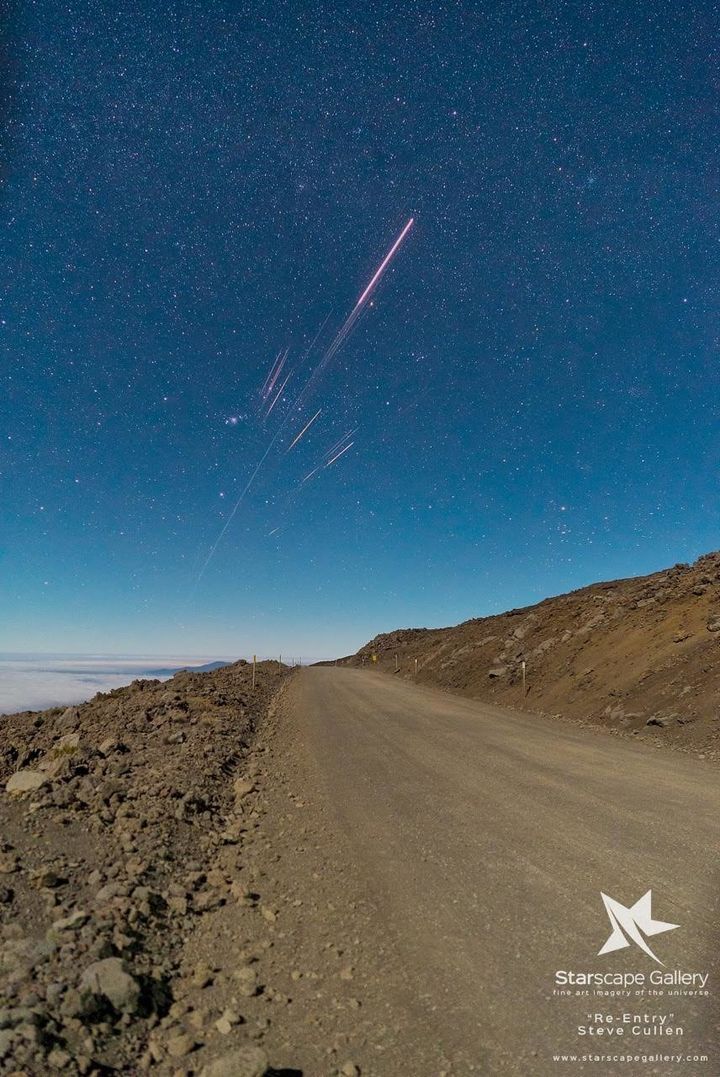HONOLULU -- Sometimes, photography is all about being in the right place at the right time.
And on Saturday morning, astrophotographer Steve Cullen managed to do just that.
Around 2 a.m, Cullen was on his way down from a nearly five-hour photo session at the 13,796-foot summit of Mauna Kea on Hawaii's Big Island. The owner of Hawaii's Starscape Gallery stopped about 11,000 feet to shoot one final night-time panorama of nearby Mauna Loa, the largest active volcano on Earth.
"I was looking west to take the final frame of my panorama when I saw an orange light coming towards me," he told The Huffington Post in an email.

As a photographer who has spent his life watching airplanes, satellites and meteors in the night sky, Cullen quickly realized the "orbital fireworks" were from something man-made re-entering the Earth's atmosphere.
Cullen said the rare experience, which lasted all of about two minutes, was nothing short of "surreal."
"I have never seen a re-entry like this," he said. "I was so excited by what I was witnessing that I fell over the berm of lava rocks and nearly tumbled down the mountain as I went to reposition the camera for the eastward view. I think I was actually lying on the ground (with a freshly scuffed up knee) when I snapped the shutter for the first east-facing shot!"



It is believed that the space junk that broke up over Hawaii's sky was a Long March rocket re-entering after being launched from China’s Xichang Space Center last September. That month, Hawaii was treated to a similar sky show when a decades-old Russian satellite re-entered Earth's atmosphere.
According to NASA, there are more than 20,000 pieces of orbital debris -- man-made objects in orbit that no longer serve a useful function. Over the past 50 years, an average of one cataloged piece of debris fell back to Earth each day.
Cullen told HuffPost that Saturday morning's sky show was certainly a case of being at the right place at the right time, but that you could argue chance favors the prepared mind.
"If you’re out shooting in the middle of the night often enough, you’re bound to see some cool stuff once in a while," he said.
Also on HuffPost:

